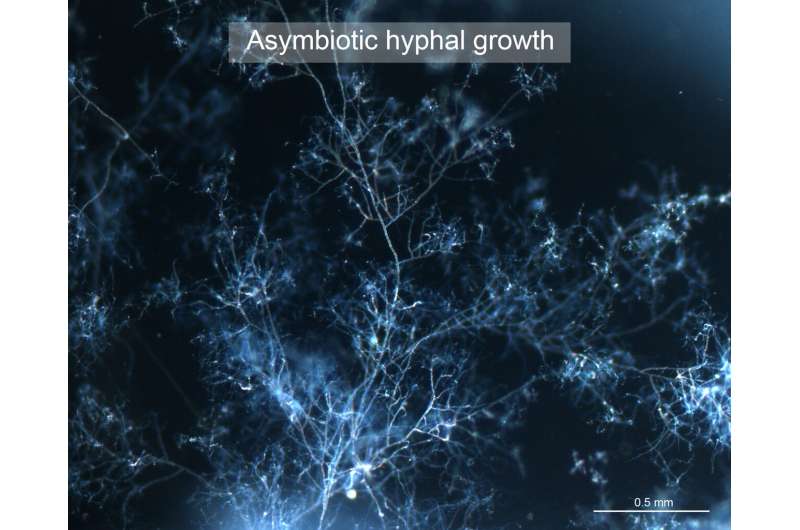For asymbiotic growth of arbuscular mycorrhizal fungi, feed them fatty acids

Scientists around the world have been working to grow arbuscular mycorrhizal (AM) fungi without their host plants because they can be used as organic fertilizer in agriculture and forestry. AM fungi help plants receive nutrients from the soil through a network that is efficient and far more reaching than their own roots can provide. A group led by graduate students Yuta Sugiura, Rei Akiyama and Associate Professor Katsuharu Saito of Shinshu University successfully demonstrated that AM fungi can be grown asymbiotically when given myristate as a carbon and energy source.
The history of the relationship between AM fungi and plants growing on land goes back 460 million years. For the first time in its 460 million year history, arbuscular mycorrhizae are about to gain independence from plants, so that they can be used to help plants grow in less fertile soil. Corresponding author Professor Saito states "although it was considered difficult, AM fungi has been successfully grown in a culture medium. With advancements, microbial materials for agricultural use can be produced."
"The growth speed and efficiency is still low and we are working on spore formation so the next generation can be grown. We hope to work on a collection of cultures that can be grown independently and be applied for use in agriculture." Currently, the only way for AM fungi to be used in agriculture is with their host plants, making its use as fertilizer expensive and hard to implement. With the advancement in asymbiotic culture, the hope is that less chemical fertilizer will be needed for use in agriculture.
More information: Yuta Sugiura et al, Myristate can be used as a carbon and energy source for the asymbiotic growth of arbuscular mycorrhizal fungi, Proceedings of the National Academy of Sciences (2020). DOI: 10.1073/pnas.2006948117
Journal information: Proceedings of the National Academy of Sciences
Provided by Shinshu University




















